The 100 Best Rock Bands of the ’80s: The Definitive Guide
An in-depth ranking of the 100 most influential rock bands of the ’80s, covering every genre from post-punk to stadium rock.
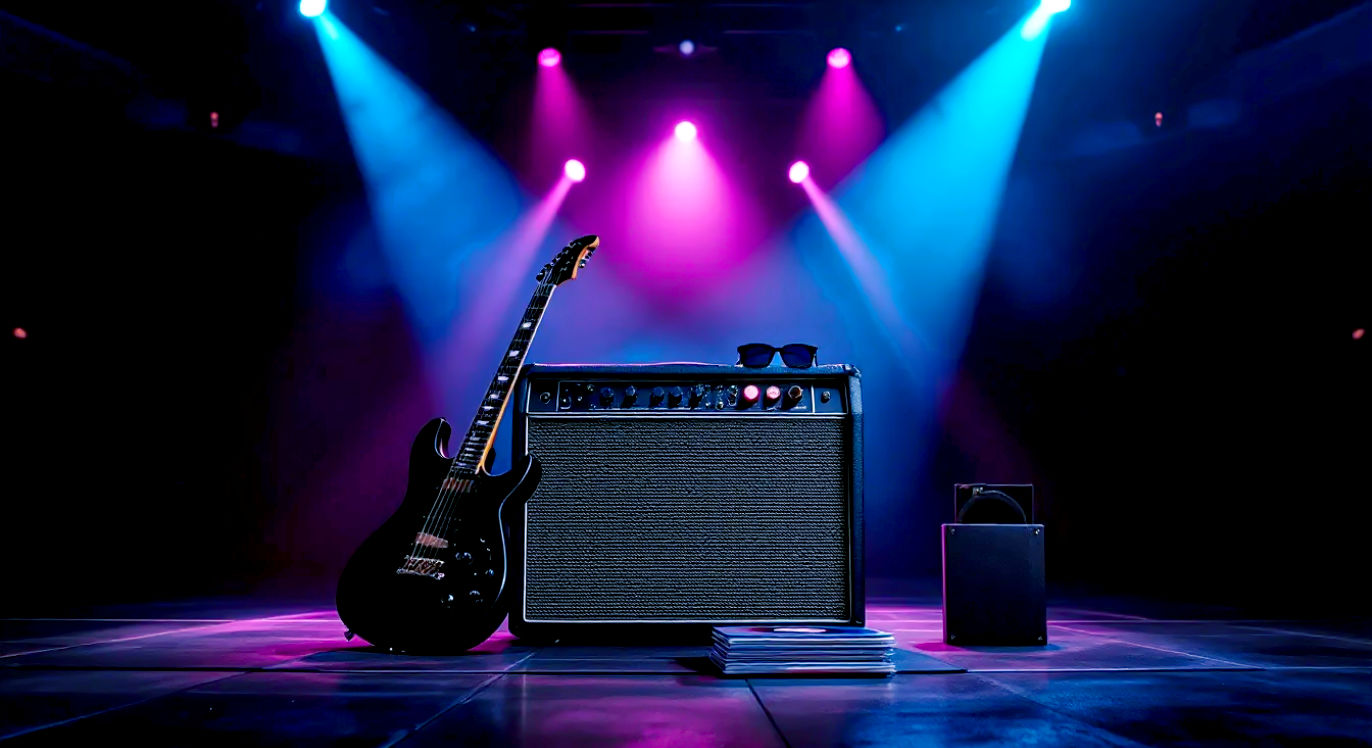
This post may contain affiliate links. If you make a purchase through these links, we may earn a commission at no additional cost to you.
Let’s be honest. When you think of ‘80s rock, your mind probably jumps straight to skin-tight leather trousers, explosive hairspray clouds, and guitar solos that could shatter glass. And you wouldn’t be wrong. That was certainly a big, loud part of the story. But it was far from the whole story.
The 1980s was one of the most creatively chaotic and wonderfully diverse decades in rock history. The ‘70s dinosaurs of prog and classic rock were either adapting or facing extinction. Punk had kicked the doors down, proving that you didn’t need a music degree to make a racket and say something important. From that explosion, a thousand different sounds bloomed.
In one corner, you had the gloomy, rain-coated poets of post-punk and goth, crafting masterpieces in grey British cities. In another, the glossy, synth-drenched heroes of New Wave were taking over the brand-new music television channel, MTV. Across the pond in America, hair metal was turning rock into a theatrical, hedonistic circus on Sunset Strip, while in sleepy college towns, a quieter revolution called ‘alternative rock’ was starting to bubble under the surface. And all the while, metal was getting faster, heavier, and angrier.
So, how do you even begin to rank the best bands from such a sprawling, brilliant mess? It’s a fool’s errand, some might say. But we’re not just throwing darts at a board here. This list isn’t based on some algorithm or a quick glance at record sales. It’s built on a few core ideas that get to the heart of what made a band truly great in the 1980s.
Our Criteria: How We Chose the Titans
To build this definitive list, we judged each band on a combination of four key things:
- Innovation and Influence: Did they invent a new sound? Did they kickstart a whole genre? Are there dozens of bands today who still sound a bit like them? This is about shaping the future.
- Cultural Impact: Were they simply unavoidable? Did their songs define film scenes, rule the newly-launched MTV, and become the soundtrack to a generation’s life? This is about owning the decade.
- Artistic Merit: Strip away the image and the hype. How good were the albums they released between 1980 and 1989? Is their songwriting sharp, their musicianship top-notch, and does the music still give you goosebumps today?
- Legacy: How are they remembered? Do they still fill stadiums, or are their records gathering dust? This is about standing the test of time.
We’ve sifted through the stadium-fillers, the underground heroes, the one-hit wonders, and the forgotten gems to create a list that tells the real story of ‘80s rock. So, grab your Walkman, push play, and let’s dive in.
The Groundbreakers & Trailblazers (100-76)
These are the bands that laid the groundwork. Some were influential cult heroes, others were ‘70s titans finding their footing in a new decade, and some were just a bit too weird for the mainstream. But without them, the story of ‘80s rock would be much less interesting.
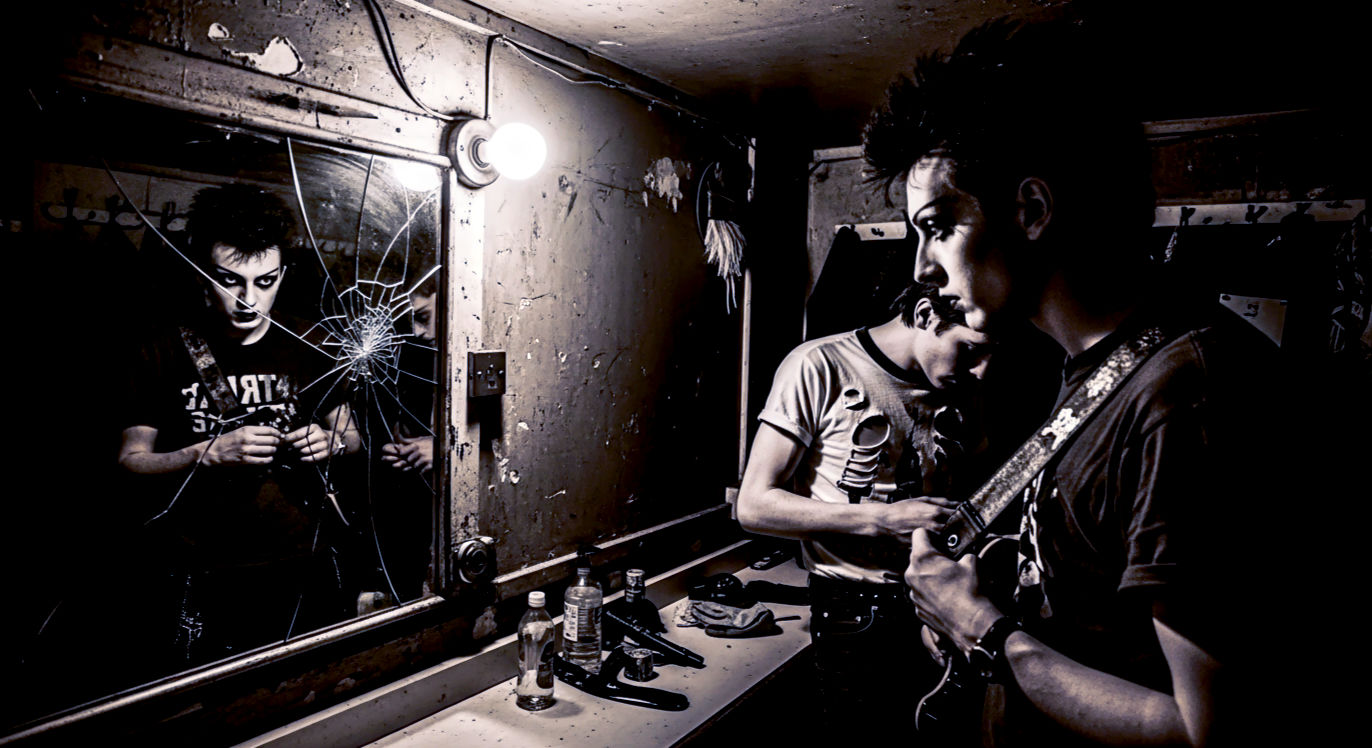
100. The Psychedelic Furs
The perfect blend of post-punk gloom and art-rock cool. Their song “Pretty in Pink” inspired a classic John Hughes film, making them accidental poster boys for ‘80s teen angst.
99. Simple Minds
Before they became stadium rockers, they were a brilliant, arty post-punk band. Their song “Don’t You (Forget About Me)” is the undisputed king of movie-ending anthems.
98. The Go-Go’s
Proof that you could have massive pop hits while still being a proper, raw, all-female rock band. They wrote their own songs, played their own instruments, and took over the charts with pure energy.
97. Killing Joke
A fearsome, heavy, and intense post-punk band from London. Their dark, tribal sound was a huge influence on industrial music and bands like Nirvana.
96. The Cult
They started as a gothy post-punk band before transforming into full-blown, leather-clad hard rockers. For a while, they were one of the coolest and toughest bands in Britain.
95. Echo & The Bunnymen
Moody, mysterious, and effortlessly cool. With Ian McCulloch’s dramatic vocals and Will Sergeant’s shimmering guitar, they were the kings of epic, atmospheric rock.
94. Skid Row
They arrived late to the party in 1989, but they brought a harder, grittier edge to hair metal. “18 and Life” was a slice of pure rock radio perfection.
93. Winger
Often unfairly dismissed, Winger was made up of seriously talented musicians. Their sound was a polished, melodic, and technically brilliant take on hard rock.
92. Warrant
The absolute peak of fun-loving, slightly silly glam metal. “Cherry Pie” might be what they’re known for, but their catalogue is full of ridiculously catchy rock anthems.
91. Twisted Sister
With Dee Snider’s outrageous look and rebellious anthems like “We’re Not Gonna Take It,” they became the face of rock rebellion for a whole generation of kids.
90. Quiet Riot
The first heavy metal band to have a number one album in America. Their cover of Slade’s “Cum on Feel the Noize” was a gateway drug for millions of young metal fans.
89. Styx
A ‘70s prog band that successfully navigated the ‘80s by embracing synthesisers and power ballads. “Mr. Roboto” was wonderfully bonkers.
88. Foreigner
Masters of the stadium-sized power ballad. You simply couldn’t escape “I Want to Know What Love Is” in the mid-80s, and for good reason.
87. Whitesnake
Led by former Deep Purple frontman David Coverdale, they went from bluesy hard rock to full-on MTV glam metal gods with their self-titled 1987 album.
86. Ratt
One of the quintessential “Sunset Strip” bands. Their hit “Round and Round” had a guitar riff so good it defined the entire glam metal sound.
85. Dokken
A perfect mix of George Lynch’s fiery guitar heroics and Don Dokken’s soaring vocals. They wrote some of the smartest, most melodic hard rock of the era.
84. Triumph
This Canadian power trio rivalled Rush for their musicianship, delivering epic, uplifting hard rock with a positive message.
83. Loverboy
The Canadian rockers in red leather pants who dominated radio with irresistible, synth-heavy anthems like “Working for the Weekend.”
82. Asia
A supergroup formed from the ashes of ‘70s prog bands like Yes and King Crimson. They made prog accessible for the ‘80s, and “Heat of the Moment” is a timeless classic.
81. Bauhaus
The godfathers of goth. Dark, dramatic, and intensely theatrical. Their song “Bela Lugosi’s Dead” is the genre’s “Stairway to Heaven.”
80. Love and Rockets
Formed by members of Bauhaus, they took a more psychedelic and alternative path, scoring a huge hit with the T. Rex-inspired “So Alive.”
79. Adam and the Ants
With their tribal drumming, pirate outfits, and swashbuckling style, Adam Ant was one of Britain’s most unique and exciting pop stars at the start of the decade.
78. Siouxsie and the Banshees
Led by the iconic Siouxsie Sioux, they were post-punk pioneers who constantly evolved, exploring everything from goth to psychedelia with incredible artistry.
77. Dead Kennedys
The most biting and satirical of the American hardcore punk bands. Jello Biafra’s lyrics were a hilarious and furious attack on politics and society.
76. Black Flag
The ultimate hardcore punk band. Relentless, raw, and fiercely independent. Their logo is still one of the most iconic symbols of rebellion in music.
The Arena Fillers & Chart Stormers (75-50)
These bands were the reliable workhorses of the decade. They sold millions of records, filled arenas, and their songs were the wallpaper of the 1980s. You knew them, you loved them, and you probably had their poster on your wall.
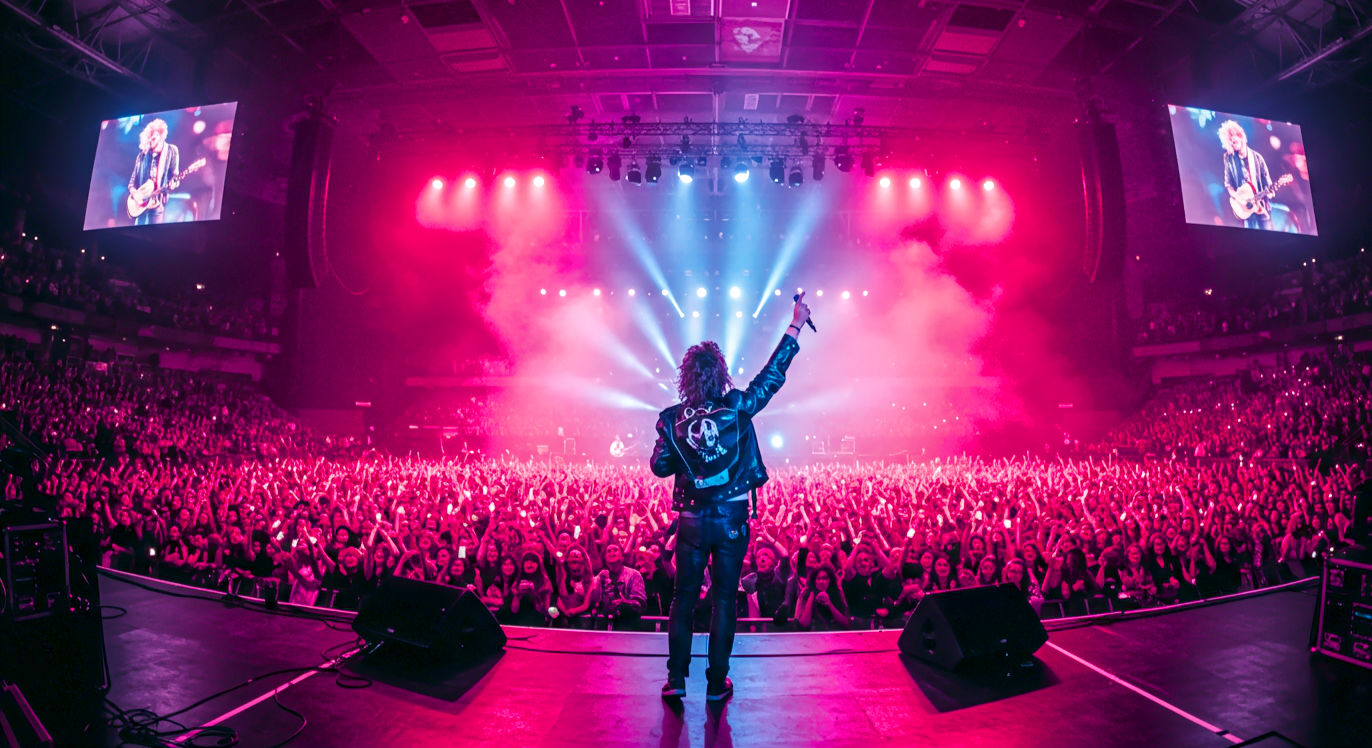
75. The Cars
The sleekest and coolest of the New Wave bands. They blended rockabilly guitars with icy synths to create a sound that was both futuristic and timeless.
74. The Police
Although they broke up mid-decade, their influence was immense. They mixed reggae, punk, and pop into a sound that was uniquely their own. “Every Breath You Take” was the biggest song on the planet.
73. Journey
The undisputed kings of the arena rock power ballad. Steve Perry’s voice was a force of nature, and “Don’t Stop Believin'” has become an immortal anthem of hope.
72. REO Speedwagon
They struck gold with their 1980 album Hi Infidelity. They mastered the art of the sentimental rock ballad that you couldn’t help but sing along to.
71. Toto
A band of ridiculously talented session musicians who could play anything. “Africa” is one of the most beloved and enduring songs of the decade for a reason.
70. Huey Lewis and the News
Wholesome, feel-good, pub-rock fun. Their music was the perfect good-time soundtrack, and their songs for Back to the Future cemented their legacy.
69. Joan Jett & The Blackhearts
The queen of rock ‘n’ roll. Joan Jett’s “I Love Rock ‘n’ Roll” was a defiant, leather-clad statement of intent. She was the real deal.
68. Pat Benatar
With a powerful voice and a tough attitude, she was one of the biggest stars on early MTV, scoring huge hits with rock anthems like “Hit Me with Your Best Shot.”
67. Billy Idol
He took the swagger of punk, added a pop shine and a sneer, and became a global superstar. “White Wedding” and “Rebel Yell” are pure ‘80s gold.
66. Bryan Adams
The Canadian rocker delivered gravelly, heartfelt, and ridiculously catchy rock songs that were tailor-made for radio and stadiums.
65. John Mellencamp
The voice of the American heartland. He told stories about real people and small towns with an honesty and passion that was impossible to fake.
64. Tom Petty and the Heartbreakers
Consistently brilliant. Petty was one of the all-time great American songwriters, and the Heartbreakers were the perfect band, effortlessly cool and always serving the song.
63. ZZ Top
The Texas trio discovered synthesisers and MTV and became unlikely global superstars with their album Eliminator. The beards, the car, the fuzzy guitars—it was iconic.
62. Stevie Ray Vaughan
A true guitar hero. He single-handedly revived blues-rock in the ‘80s with a fire and virtuosity that hadn’t been seen since Jimi Hendrix.
61. INXS
The impossibly cool band from Australia. With Michael Hutchence’s magnetic stage presence and a slinky, funky rock sound, they were one of the biggest bands in the world by the end of the decade.
60. The Pretenders
Led by the amazing Chrissie Hynde, they were tough, tender, and brilliant. They mixed punk energy with classic songwriting, and “Back on the Chain Gang” is a masterpiece.
59. Squeeze
Masters of the quintessentially British pop-rock song. Chris Difford and Glenn Tilbrook were dubbed “the new Lennon and McCartney” for their clever, catchy, and character-filled tunes.
58. Eurythmics
Annie Lennox was an iconic, androgynous powerhouse, and Dave Stewart was a production genius. Together, they made synth-pop that was soulful, artistic, and huge.
57. Talk Talk
They started as a synth-pop band but evolved into something far more beautiful and experimental. Their later albums are now seen as pioneering masterpieces of post-rock.
56. XTC
Quirky, clever, and profoundly English. They were pop geniuses who wrote songs with more wit and invention than almost anyone else.
55. The Human League
From Sheffield, they were synth-pop pioneers who created one of the decade’s defining singles, “Don’t You Want Me”—a perfect pop drama.
54. Tears for Fears
They wrote intelligent, ambitious, and massively successful synth-pop. Songs from the Big Chair was a global smash, filled with anthems for a generation.
53. a-ha
The Norwegian trio who took over the world with “Take on Me” and its groundbreaking music video. But they were far more than a one-hit wonder, crafting years of perfect, melancholy pop-rock.
52. The Bangles
They combined ‘60s harmonies with ‘80s energy to create perfect pop-rock gems. “Manic Monday” (written by Prince!) and “Walk Like an Egyptian” are classics.
51. Genesis
Already a prog giant, Genesis in the ‘80s, led by Phil Collins, became one of the biggest pop-rock bands in the world. Their knack for a catchy hook was undeniable.
The Genre Definers & Scene Shapers (50-26)
These are the bands that weren’t just popular; they were the pillars of a whole movement. When you think of a certain style of ‘80s music, these are the names that come to mind. They were the leaders, the innovators, and the standard-bearers.
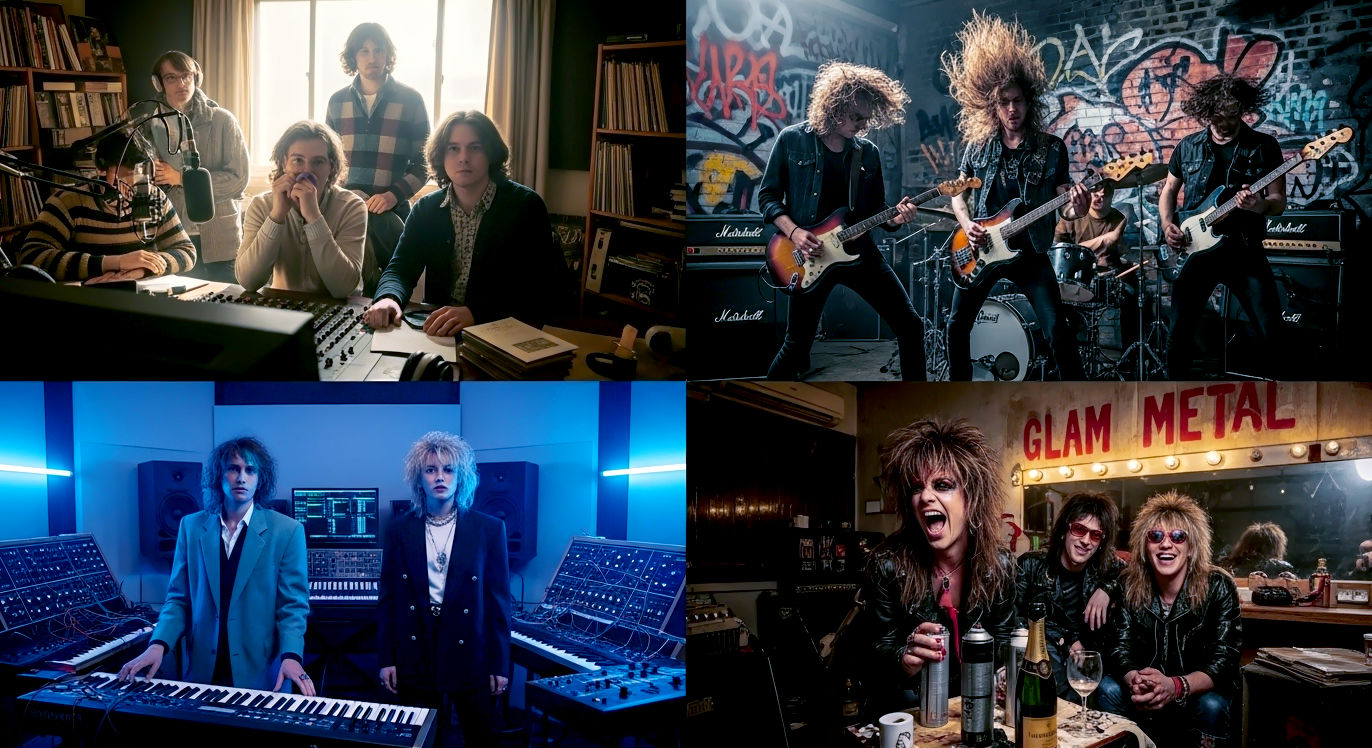
50. The Clash
While their masterpiece London Calling was technically 1979, their influence and evolution in the early ‘80s was huge. They experimented with dub, funk, and rap, proving punk could grow up.
49. The Jam
The voice of a generation of sharp-suited British youth. Paul Weller’s songwriting was a brilliant mix of punk energy, Mod style, and biting social commentary.
48. Duran Duran
The “pretty boys” of the New Romantic movement, but don’t let the hair and yachts fool you. They were a tight, funky, and incredibly inventive band who wrote killer pop-rock songs and conquered the world with their stylish music videos.
47. New Order
Rising from the tragedy of Joy Division, they embraced synthesisers and dance music, creating a sound that would change pop and rock forever. “Blue Monday” is still a floor-filler.
46. Depeche Mode
They took synth-pop to a darker, more industrial, and more profound place. Their 1989 album Violator (released in early 1990 but recorded in ’89) was the culmination of a decade spent perfecting their sound, making them stadium-filling goth-pop kings.
45. The Cure
Robert Smith and his ever-changing lineup created a universe of their own. They could be intensely gloomy and depressive one minute, and then write the most perfect, dizzyingly happy pop song the next. They were the ultimate alternative band.
44. The Smiths
For a few short years, they were arguably the most important band in Britain. Morrissey’s witty, miserable lyrics and Johnny Marr’s dazzlingly inventive guitar playing were a match made in heaven. They defined indie music for a generation.
43. R.E.M.
The band that showed America a different path. Their mysterious, jangly, and intelligent music was the opposite of mainstream rock. They built a massive following from the ground up, laying the blueprint for the alternative rock explosion of the ‘90s.
42. Talking Heads
One of the most original and artistic bands ever. They fused punk, funk, and world music into something completely new and exciting. Remain in Light is a landmark album.
41. U2
They entered the decade as passionate post-punk kids from Dublin and ended it as the biggest band in the world. With albums like The Joshua Tree, they wrote songs that were big, important, and full of hope.
40. Dire Straits
Led by the sublime guitar work of Mark Knopfler, they were masters of sophisticated, clean, and beautifully crafted rock. Brothers in Arms was one of the biggest albums of the decade and helped launch the CD format.
39. AC/DC
After the tragic death of singer Bon Scott, they came roaring back with new frontman Brian Johnson and released Back in Black, one of the best-selling and most-loved hard rock albums of all time. They were unstoppable.
38. Scorpions
The German hard rock veterans hit their commercial peak in the ‘80s. “Rock You Like a Hurricane” is a definitive stadium anthem, and “Still Loving You” is a masterclass in power-balladry.
37. Mötley Crüe
The most notorious, decadent, and exciting of the hair metal bands. They lived the rock ‘n’ roll lifestyle to the absolute extreme and wrote the perfect soundtrack for it.
36. Poison
They were the ultimate party band. Fun, colourful, and completely unpretentious, they wrote some of the catchiest glam metal hits of the era, including the epic ballad “Every Rose Has Its Thorn.”
35. Bon Jovi
They took the hard rock sound of the era, gave it a huge, pop-friendly chorus, and became global superstars. Slippery When Wet was a phenomenon, and Jon Bon Jovi was the ultimate ‘80s rock frontman.
34. Def Leppard
They blended pop hooks with heavy metal riffs like no one else. After overcoming immense tragedy, they created Hysteria, an album so full of hits it’s practically a greatest hits collection on its own.
33. Ozzy Osbourne
After being fired from Black Sabbath, Ozzy launched a solo career that made him bigger than ever. With the incredible guitarist Randy Rhoads by his side, he released two of the most important metal albums of the decade.
32. Dio
After leaving Black Sabbath and Rainbow, Ronnie James Dio formed his own band and became a heavy metal icon. With his powerful voice and fantasy-themed lyrics, he created timeless anthems like “Holy Diver” and “Rainbow in the Dark.”
31. Judas Priest
The “Metal Gods.” They defined the look and sound of heavy metal in the early ‘80s with their leather and studs, twin-guitar attack, and albums like British Steel and Screaming for Vengeance.
30. Motörhead
Loud, fast, and relentless. Lemmy was rock ‘n’ roll. Motörhead were the bridge between punk and metal, and their anthem “Ace of Spades” is a sacred text for anyone who likes their music heavy.
29. Slayer
The fastest, scariest, and most extreme of the “Big Four” of thrash metal. Their 1986 album Reign in Blood is a terrifying and brilliant masterpiece that pushed the boundaries of speed and aggression.
28. Megadeth
Formed by Dave Mustaine after he was kicked out of Metallica, Megadeth played a technical, complex, and furiously angry style of thrash metal.
27. Anthrax
The fun-loving, skate-punk-influenced members of the “Big Four.” They brought a sense of humour and New York attitude to thrash, and were pioneers in mixing metal and rap.
26. Pixies
They arrived at the end of the decade and changed everything. Their bizarre, brilliant songs, with their quiet/loud dynamics, were a huge influence on the alternative rock boom of the ‘90s. Kurt Cobain said he was just trying to copy them.
The Icons of the Decade (25-11)
These bands are more than just influential; they’re legendary. Their music wasn’t just on the radio; it was part of the cultural fabric. They produced multiple classic albums and defined the hopes, fears, and dreams of the 1980s.
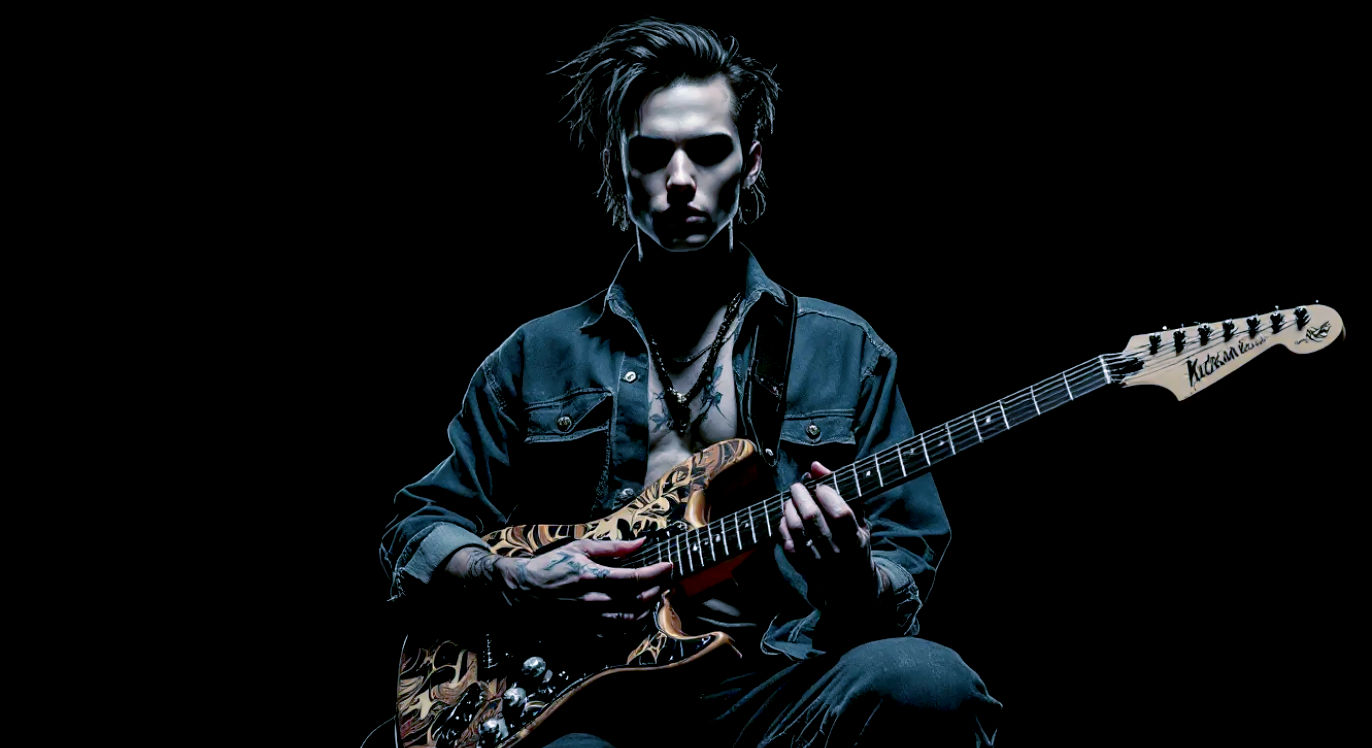
25. Rush
The Canadian prog-rock heroes embraced synthesisers in the ‘80s and created some of their most popular and enduring work. Moving Pictures is a flawless album, and their musicianship remained second to none.
24. The Replacements
The beautifully chaotic heart of American alternative rock. They could be a drunken mess one minute and play the most heartbreakingly beautiful song you’ve ever heard the next.
23. Sonic Youth
The godparents of noise-rock. They treated their guitars like science experiments, creating a sound that was challenging, weird, and incredibly influential for the future of indie and alternative music.
22. Tom Waits
While not a “band,” his artistic transformation in the ‘80s was staggering. He went from a boozy bar-room singer to a truly experimental artist, creating a junkyard orchestra sound on albums like Swordfishtrombones that was like nothing else on Earth.
22. Nick Cave and the Bad Seeds
After his confrontational band The Birthday Party imploded, Nick Cave emerged as a gothic, poetic, and masterful storyteller. His music was dark, literary, and intensely powerful.
21. Prince
Another solo artist who has to be on this list. He was a one-man band, a phenomenal guitarist, and a genius songwriter who blended rock, funk, and pop. Purple Rain was a cultural event, and his guitar playing could rival anyone’s.
20. Bruce Springsteen
“The Boss” became the biggest rock star on the planet with Born in the U.S.A.. The album was a collection of powerful, radio-friendly rock anthems that told stories of working-class struggle and American life.
19. Peter Gabriel
After leaving Genesis, he became one of the most innovative and artistic solo acts of the decade. His 1986 album So was a global smash, a perfect blend of art-rock, world music, and pop hooks.
18. Kate Bush
A true one-of-a-kind artist. Her album Hounds of Love is a breathtaking masterpiece of experimental, emotional, and beautiful art-pop that still sounds like it’s from the future.
17. Queen
They entered the ‘80s as rock royalty and just kept going. From the minimalist funk of “Another One Bites the Dust” to the pop perfection of “Radio Ga Ga,” they were masters of every style. And their performance at Live Aid in 1985 is simply the greatest live rock performance of all time.
16. Van Halen
They dominated the start of the decade with their unique brand of party-hard rock. Eddie Van Halen revolutionised guitar playing, and David Lee Roth was the ultimate showman. Even after Roth left, their Sammy Hagar-fronted era was hugely successful.
15. David Bowie
The ultimate musical chameleon continued to reinvent himself. He kicked off the decade with the brilliant Scary Monsters and then became a global pop superstar with Let’s Dance, proving he could master any genre he turned his hand to.
14. The Rolling Stones
The old guard proved they still had it, releasing the excellent Tattoo You in 1981. They spent the rest of the decade as the biggest stadium-touring rock band on the planet, a title they’ve never really given up.
13. Yes
The prog legends who had one of the most surprising comebacks of all time. They embraced a modern, poppy sound and scored a massive number one hit with the brilliant and inventive “Owner of a Lonely Heart.”
12. Pink Floyd
Even without Roger Waters, they filled stadiums and sold millions of albums with A Momentary Lapse of Reason. They proved the brand was bigger than any one member and were still one of the biggest rock spectacles around.
11. Paul McCartney
He kicked off the decade with the quirky, experimental McCartney II and continued to release hit albums and singles, collaborating with everyone from Stevie Wonder to Michael Jackson, proving his songwriting genius was as sharp as ever.
The Unforgettable Top 10: The Decade’s True Royalty
These are the bands that defined the 1980s. You cannot tell the story of the decade without them. Their music, their image, and their influence were monumental. They are the undisputed kings.
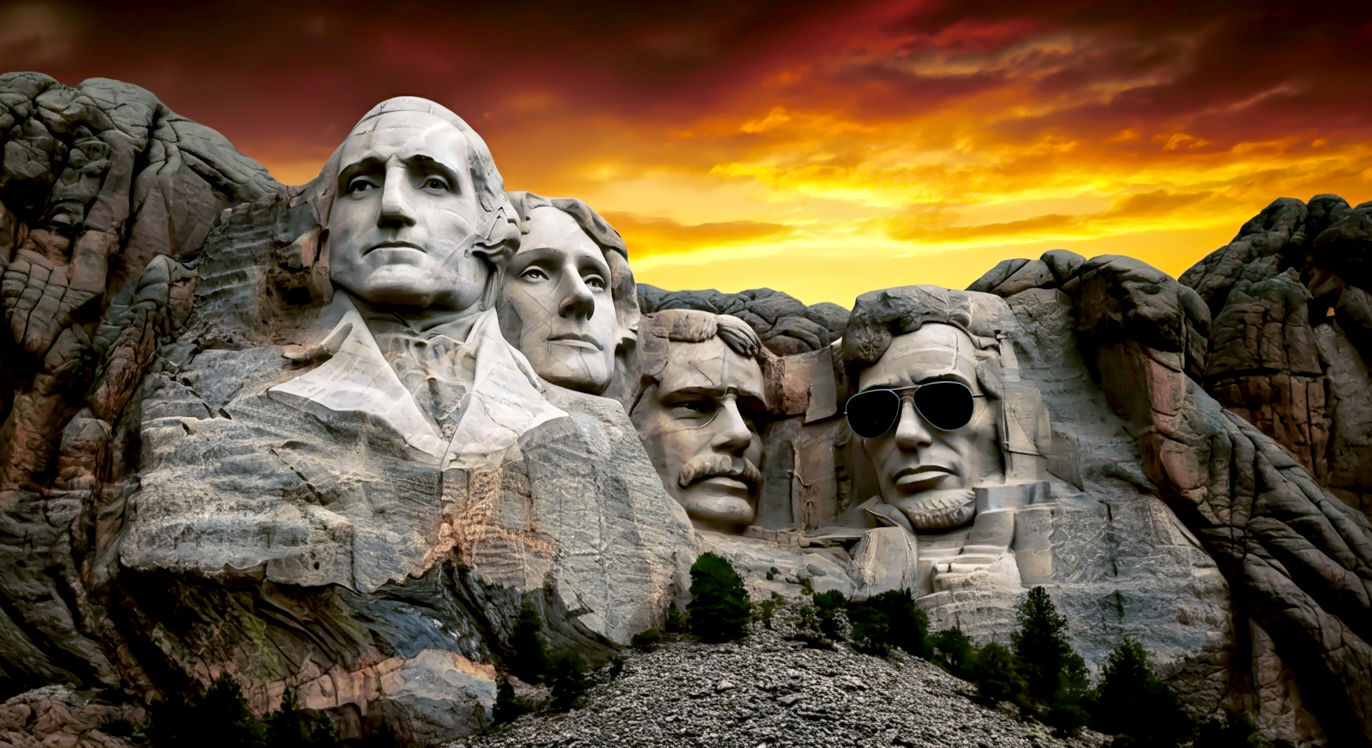
10. Iron Maiden
The leaders of the New Wave of British Heavy Metal. Iron Maiden were an unstoppable force in the ‘80s, releasing a string of seven classic, genre-defining albums. With their mascot Eddie, their galloping basslines, twin-guitar harmonies, and Bruce Dickinson’s air-raid siren vocals, they created a sound and a world that was entirely their own. They were, and still are, a global metal phenomenon.
9. Guns N’ Roses
They arrived like a bomb at the end of the decade. While most rock had become polished and safe, Guns N’ Roses were raw, dangerous, and real. Appetite for Destruction is a once-in-a-generation album, a perfect storm of street-smart grit, melodic genius, and electrifying rock ‘n’ roll swagger. They were the last great, truly legendary rock band.
8. The Police
For the first half of the decade, they were one of the smartest and most successful bands in the world. Sting, Stewart Copeland, and Andy Summers were three incredible musicians who pushed each other to create a sound that was sparse, sophisticated, and incredibly catchy. Their final album, Synchronicity, made them superstars, but the tension that made their music so brilliant also tore them apart.
7. R.E.M.
The quiet giants of the decade. From their debut E.P. Chronic Town in 1982 to Green in 1988, R.E.M. carved out a path for American alternative rock. Michael Stipe’s mumbled, poetic lyrics and Peter Buck’s jangly Rickenbacker guitar created a sound that was both timeless and new. They became huge on their own terms, without compromising, inspiring countless bands to do the same.
6. The Smiths
No band captured the feeling of being a thoughtful, miserable, and romantic British teenager in the ‘80s better than The Smiths. In just four years, they released four perfect studio albums and a string of brilliant singles. Johnny Marr was a guitar genius, creating entire orchestras with his six strings, while Morrissey was a lyricist of unparalleled wit and woe. They were a cultural phenomenon whose music means more to their fans than almost any other band.
5. U2
The journey of U2 was the story of ‘80s rock. They started as earnest post-punks on Boy, became political activists with War, and then, with the help of producers Brian Eno and Daniel Lanois, they discovered atmosphere and texture on The Unforgettable Fire. It all culminated in 1987’s The Joshua Tree, an album that made them the biggest and, in their minds, most important band in the world. They aimed for the heavens and, for a while, they got there.
4. The Cure
No band had a more diverse or creatively rich ‘80s than The Cure. They could produce albums of suffocating, gothic despair like Pornography, and then turn around and write perfect, sparkling pop songs like “Just Like Heaven.” Robert Smith was a master of mood, crafting a unique and influential sound that could be heartbreaking, terrifying, or joyful. Their 1989 masterpiece, Disintegration, was the perfect, gloomy end to the decade.
3. AC/DC
In the face of unthinkable tragedy, AC/DC created the ultimate rock album. Back in Black isn’t just a collection of songs; it’s a defiant roar of survival, a tribute to Bon Scott, and a perfect, timeless statement of what rock ‘n’ roll is all about. Every single riff is iconic. They spent the rest of the decade as one of the biggest bands on the planet, never changing their sound because they had already perfected it.
2. Def Leppard
The story of Def Leppard in the ‘80s is one of incredible resilience and towering ambition. They started as part of the New Wave of British Heavy Metal, but with their producer “Mutt” Lange, they aimed for pop perfection. After drummer Rick Allen lost his arm in a car crash, they rallied and spent years crafting Hysteria, an album that blended hard rock with pop hooks so perfectly that it became a global sensation. It was a triumph of the human spirit and studio genius.
1. Metallica
Metallica didn’t just play heavy metal; they reinvented it. Over the course of four revolutionary albums in the ‘80s—Kill ‘Em All, Ride the Lightning, Master of Puppets, and …And Justice for All—they took the genre to a new level of speed, complexity, and lyrical intelligence. They grew from a raw garage band into sophisticated, progressive-minded musicians, pushing the boundaries of what a metal band could be. They were the most important and innovative heavy band of the decade, and their influence is immeasurable.
A Decade of Decadence and Diversity: The Final Riff
Looking back, the 1980s was a glorious, contradictory, and brilliant decade for rock music. It was a time of excess, but also of introspection. A time of glossy production, but also of raw, DIY energy. From the rain-soaked streets of Manchester to the sun-drenched boulevards of Los Angeles, rock ‘n’ roll was splintering into a dozen different, exciting forms.
The decade that started with the arty experiments of post-punk ended with the raw fury of Guns N’ Roses and the quiet revolution of the Pixies, setting the stage for the grunge explosion of the ‘90s. It was a decade of incredible change, unforgettable anthems, and legendary bands. And while the fashion might be questionable now, the music remains absolutely timeless.
Further Reading & Resources: For those looking to dive deeper into the incredible music of the 1980s, these resources are a brilliant place to start:
- NME (New Musical Express): For a classic British perspective on the weekly music scene as it happened. https://www.nme.com/
- Classic Rock Magazine: In-depth features, interviews, and reviews focusing on the giants of the genre. https://www.loudersound.com/classic-rock
- AllMusic: An incredibly comprehensive database for artist biographies, discographies, and album reviews. https://www.allmusic.com/
- Pitchfork: While known for modern indie, their features and retrospective reviews on classic ‘80s albums are often insightful. https://pitchfork.com/
- Rolling Stone: The legendary American magazine’s archive is a treasure trove of interviews and articles from the era. https://www.rollingstone.com/






